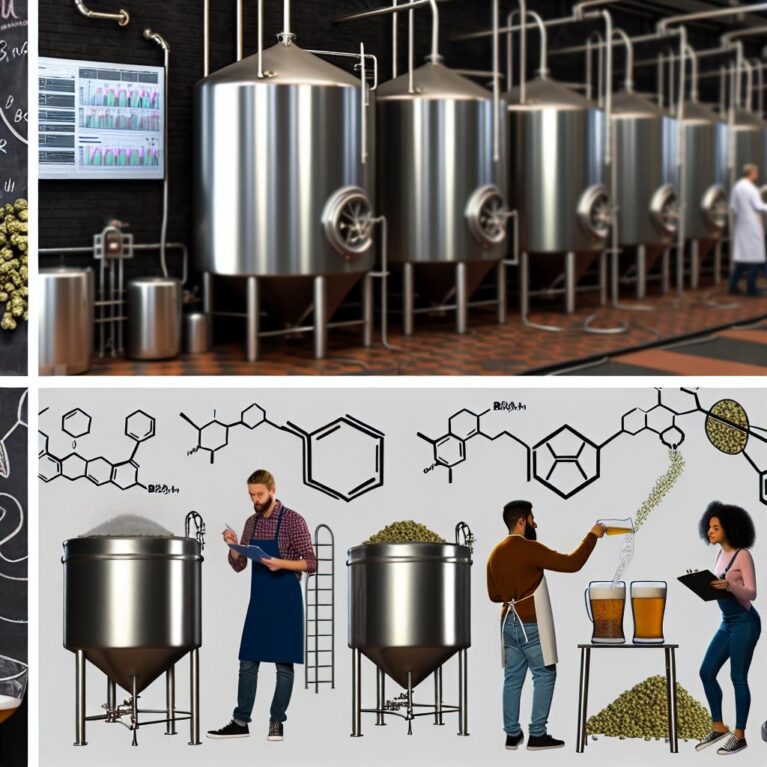The Emergence of Microbreweries
Microbreweries have become a significant force in the beer industry, reshaping the landscape of beer production and consumption. The term “microbrewery” typically refers to small-scale operations that produce a limited amount of beer, placing emphasis on quality, flavor diversity, and independent ownership. These enterprises have gained a reputation for their role in driving innovation within the craft beer sector, a segment of the market that prioritizes creativity and artisanal production methods.
Innovation in Beer Styles and Flavors
One of the most distinguishable contributions of microbreweries is their commitment to experimenting with various beer styles and flavors. Unlike larger commercial breweries that often stick to conventional recipes to cater to a broad audience, microbreweries have the flexibility to explore unique ingredients and brewing techniques. This adventurous approach has led to the creation of an array of innovative beers that attract enthusiasts seeking novel experiences.
Microbreweries frequently incorporate seasonal and locally sourced ingredients, which not only supports local agriculture but also ensures a fresh and changing lineup of beers. This practice has led to the popularization of seasonal brews that reflect the tastes and ingredients particular to a region or time of year. For instance, a microbrewery in a region abundant with apple orchards might experiment with apple-infused ales during the harvest season, providing a unique twist to traditional ale recipes. Similarly, other innovative flavors might include everything from exotic fruits to traditional spices, further expanding the palette of craft beer aficionados.
Collaborative Efforts and Community Engagement
Microbreweries are also known for their collaborative culture. They often partner with other breweries, chefs, and local businesses to create unique beer offerings that merge distinct styles and flavor profiles. Such collaborations are instrumental in fostering a culture of continuous learning and sharing among brewers, which, in turn, propels innovation within the industry. These collaborations can lead to limited edition releases that intrigue consumers and create buzz within the community, attracting beer enthusiasts who are constantly seeking the next big thing in craft beer.
Additionally, microbreweries play a significant role in community engagement. By hosting events, tastings, and brewery tours, they offer patrons an opportunity to engage with the brewing process and understand the intricacies of craft beer production. This direct interaction between brewers and consumers can also inspire innovation, as feedback and suggestions from patrons are often incorporated into future brewing endeavors. For example, a brewery might host a tasting event where attendees can sample experimental batches and provide input on what might become the next flagship beer. This participatory approach not only enhances the customer’s experience but also ensures that the offerings remain aligned with consumer preferences.
Microbreweries often extend their community involvement beyond mere brewing activities. They participate in local festivals, sponsor community events, and contribute to local charities, establishing themselves as integral parts of their localities. By doing so, they bolster their reputation as community-oriented businesses, further solidifying their connection with local patrons.
Advancements in Brewing Technology
Despite their small size, many microbreweries are at the forefront of utilizing advanced brewing technology to improve efficiency and innovation. Innovations such as automated brewing systems and enhanced fermentation monitoring have enabled these small-scale producers to maintain consistency while experimenting with new recipes. These technological advancements help microbreweries in refining their processes, allowing them to produce high-quality beers that meet consumer expectations.
For example, automated systems can precisely control temperature and fermentation times, ensuring that each batch is brewed to perfection. These systems can also reduce the margin of error, which is crucial for small operations where any loss can significantly impact the business. Furthermore, advanced software solutions that track inventory, sales, and consumer preferences allow microbreweries to make data-driven decisions. This capability helps these enterprises to not only streamline operations but also to better anticipate market demands and trends.
In addition to improving efficiency and quality control, technology has provided microbreweries with platforms for creativity. Techniques such as barrel aging, dry hopping, and the use of non-traditional yeasts have been enhanced by precise technological applications, allowing brewers to push the boundaries of what defines beer. Consequently, consumers have witnessed the emergence of distinct styles like sour ales, imperial stouts with complex flavor profiles, and increasingly popular New England-style IPAs characterized by their hazy appearance and juicy flavor.
Conclusion
In summary, microbreweries are pivotal to the ongoing evolution of the craft beer industry. By daring to deviate from the norms and embracing groundbreaking techniques, they contribute significantly to the diversity and richness of the global beer market. Their commitment to innovation, community engagement, and technological advancement ensures that they remain vital players in shaping the future of craft beer.
The dynamics of these small-scale enterprises highlight a paradigm shift in consumer preferences, where quality and uniqueness are oftentimes favored over mass-produced uniformity. This shift has encouraged larger breweries to reconsider their own approaches, leading to a more diversified beer market that caters to a wide array of tastes. The vibrant culture within microbreweries, characterized by collaboration and community integration, continues to inspire the craft beer movement, ensuring its dynamism and relevance in the years to come.
As microbreweries continue to evolve and expand their influence, they represent not just a trend but a cultural movement within the beer industry—one that prioritizes sustainability, authenticity, and locality. Their resilience and adaptability underscore the importance of these values in today’s market and point to a promising future for craft beer lovers worldwide. For further insights into the impact of microbreweries, readers may explore more about their contributions on platforms dedicated to the craft beer community such as CraftBeer.com.

